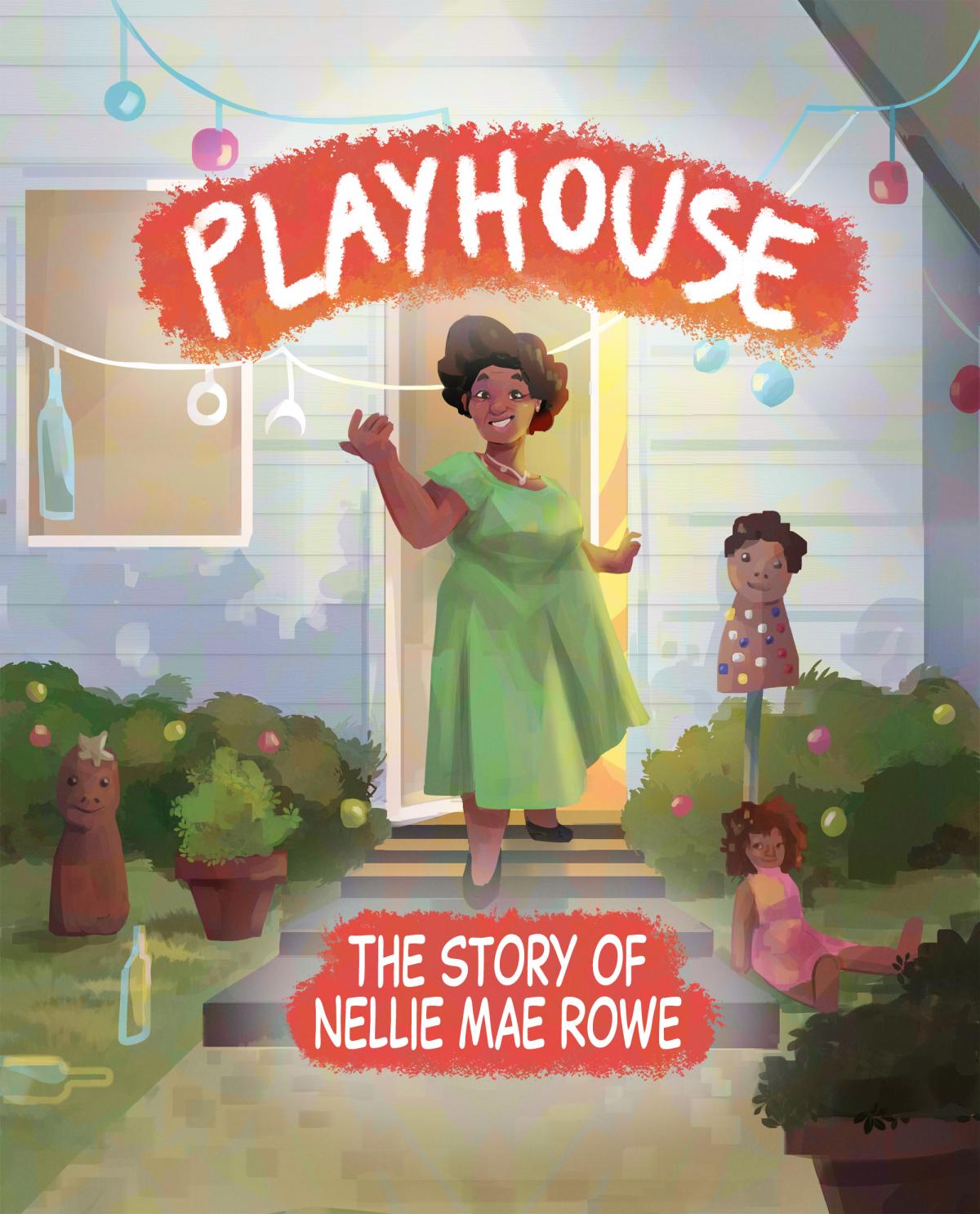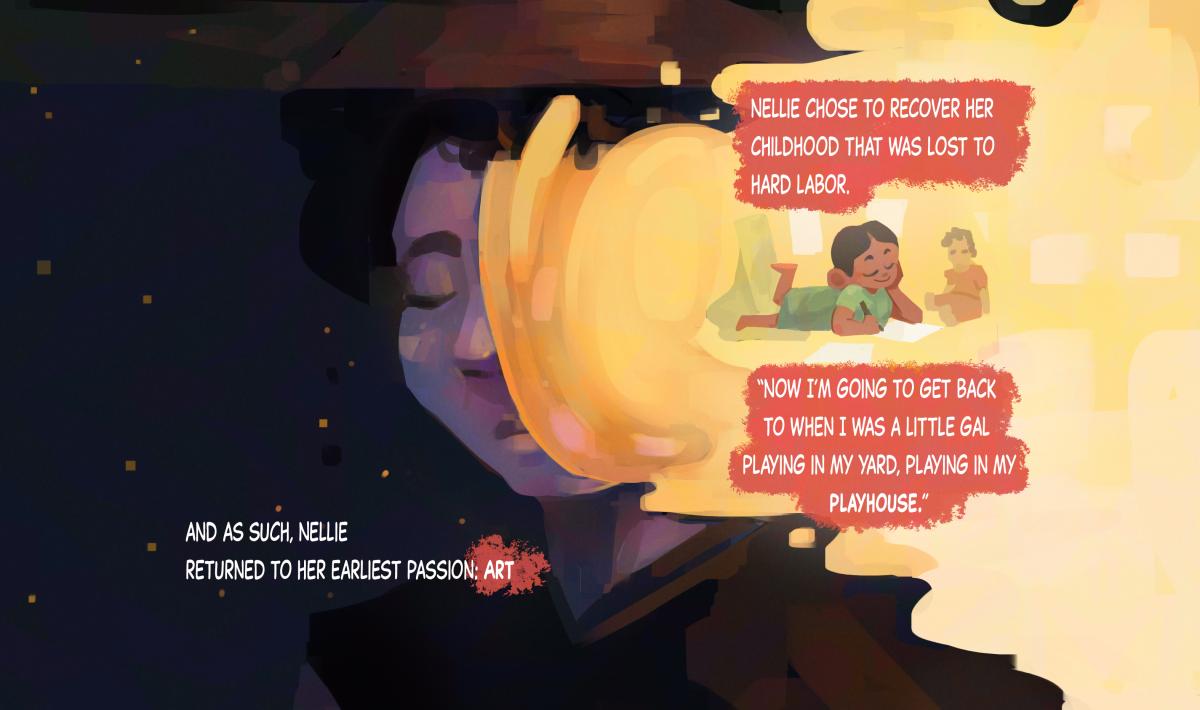
Nellie Mae Rowe was born in Georgia, in the last year of the nineteenth century—to a once-enslaved father and mother born the year of Emancipation. Rowe labored as a child, married young, was widowed twice, and worked much of her adult life as a uniformed “domestic” in white households. Although her early life was shaped by segregation and oppression, Rowe’s desire to define herself sparked a joyful and colorful body of art that suffused her home and yard. This undeniable and contagious positivity made Rowe one of the first Black self-taught women to be celebrated for her art.
One of the great joys in working on SAAM’s Drawn to Art comics project is discovering an artist that I personally don’t know much about and then seeing what an illustrator can do to bring a complex and important story to life. Micah Eubanks, a student-illustrator at the Ringling College of Art and Design, created his own work of art in creating the comic about Nellie Mae Rowe.
The comic begins with an older Nellie Mae Rowe standing in front of the home she called her “Playhouse,” a place where, after years of domestic work and serving others, she could devote herself to her childhood passion: creating art. She filled the inside of her house with her art and adorned the outside with art as well, including homemade dolls and sculptures made from chewing gum.
“Playhouse” then travels back in time and takes us through Rowe’s difficult childhood. The daughter of a formerly enslaved man, she had to leave school at the age of four and work with her family on a farm. She would eventually become a domestic worker until the age of fifty.
As Micah so beautifully illustrates, that was the age when Rowe decided to return to art and dedicate the rest of her life to creating it. This image features Rowe’s darkness on the left and the bright possibilities of art on the right. I think of it as the moon and sun out at the same time, with the artist being pulled towards the brightness by her own will. As the comic continues, Micah riffs on Rowe’s own colors and images, including animals of her own creation.
The story concludes with Nellie Mae Rowe, now an accomplished and recognized artist, standing in front of her “Playhouse” in her signature green dress, extending a hand to welcome a young visitor to her home. The comic has come full circle. Rowe’s extended hand invites not only the child in the story, but also the reader into her world.
This comic is part of a series Drawn to Art: Tales of Inspiring Women Artists that illuminates the stories of women artists in the collection of the Smithsonian American Art Museum. Inspired by graphic novels, these short takes on artists’ lives were each drawn by a student-illustrator from the Ringling College of Art and Design.
We invite you to read the comic and share with your friends and young people in your life.






















